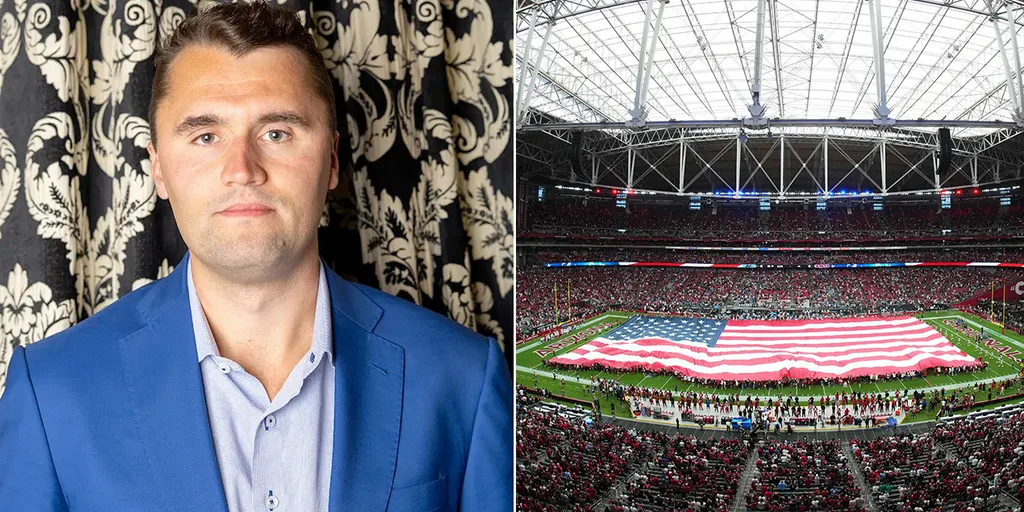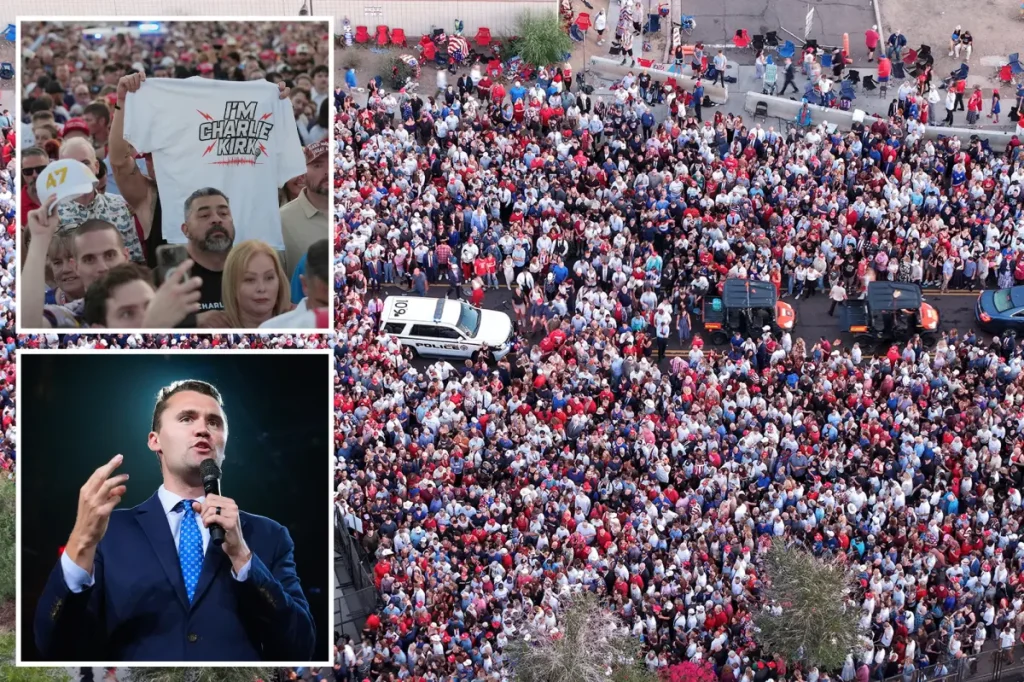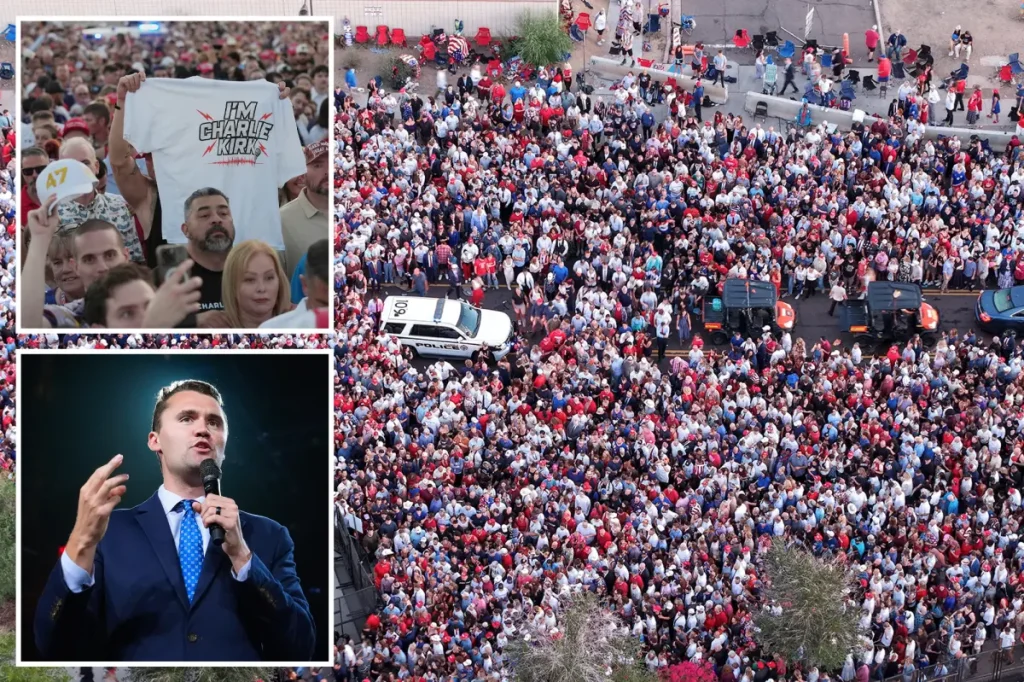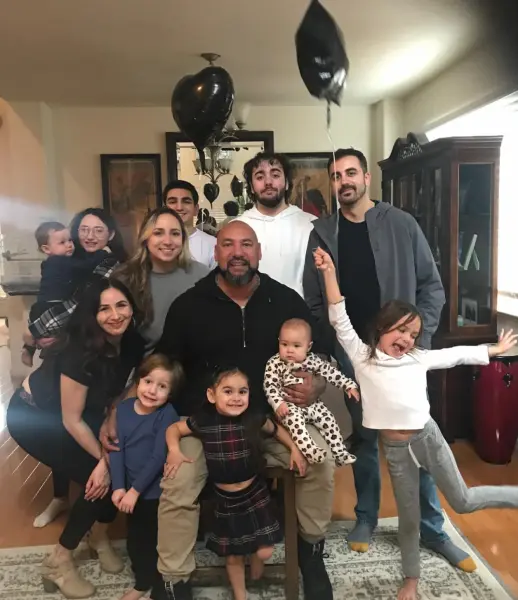Arizona Stadium Braces for Massive Crowds as Over 200,000 Expected to Mourn Charlie Kirk, With Fans Arriving Before Dawn
The scale of the gathering planned for Charlie Kirk’s funeral has already exceeded what many thought possible. What was initially expected to draw 100,000 people has now grown to projections of more than 200,000 mourners, creating one of the largest memorial turnouts in recent memory. The funeral for the 31-year-old conservative activist and Turning Point USA founder will be held at State Farm Stadium, home of the Arizona Cardinals, on September 21. The main arena seats around 73,000, but the demand has been so overwhelming that a second nearby venue has been arranged for overflow crowds, with large screens set up to broadcast the service live.

The atmosphere outside the stadium ahead of the service has been one of both grief and determination. Reports describe people arriving as early as 4 a.m., forming long lines in the predawn hours, many walking miles from their parking spots to reach the stadium. The early arrivals reflect the passion of Kirk’s supporters, who say they feel compelled to pay tribute to someone they believe had a unique ability to inspire young people, shape conversations about politics, and push issues into the national spotlight. Some described the event as less of a funeral and more of a statement about the impact Kirk had made in such a short life.
The logistics alone are staggering. Police, security officials, and event organizers have been coordinating to manage the massive crowds, with traffic diversions and crowd-control measures in place. Volunteers are on site to help direct people and distribute water in the desert heat, while medical staff are prepared for emergencies that may arise with such large numbers of people gathered in one place. For the families and individuals waiting in line, though, the inconvenience is a small price to pay. Many have traveled from across the country, some bringing children or entire church groups, to be part of what they see as a historic farewell.

Inside, the service is expected to feature tributes from political leaders, close friends, and family members, alongside musical performances and moments of reflection. While official details of the program remain private, it is clear that faith and legacy will be central themes. Organizers have emphasized that this event is about more than remembering Kirk as a political figure. It is about celebrating his life as a son, husband, and leader whose message connected with people far beyond Washington.
The sheer numbers highlight the influence Kirk carried among a devoted base of followers. Even those who disagreed with his politics acknowledge the scale of his reach. For supporters, the crowds outside State Farm Stadium are proof that his voice resonated deeply and that his absence has left a void difficult to fill. For his family, the turnout is a powerful reminder of how far his impact extended beyond their own circle, touching countless strangers who nonetheless feel a personal sense of loss.

In many ways, the size of the event has turned it into more than just a funeral. It has become a moment of unity for people who admired his work and his vision. The long walks, the early hours, the crowded lines—all of it is seen as part of showing up, of bearing witness, of saying thank you to someone whose life ended far too soon. When the service begins, the images of a packed stadium and an overflowing crowd nearby will tell their own story, one of grief, faith, and the enduring influence of a young man whose name has become inseparable from the movement he built.



